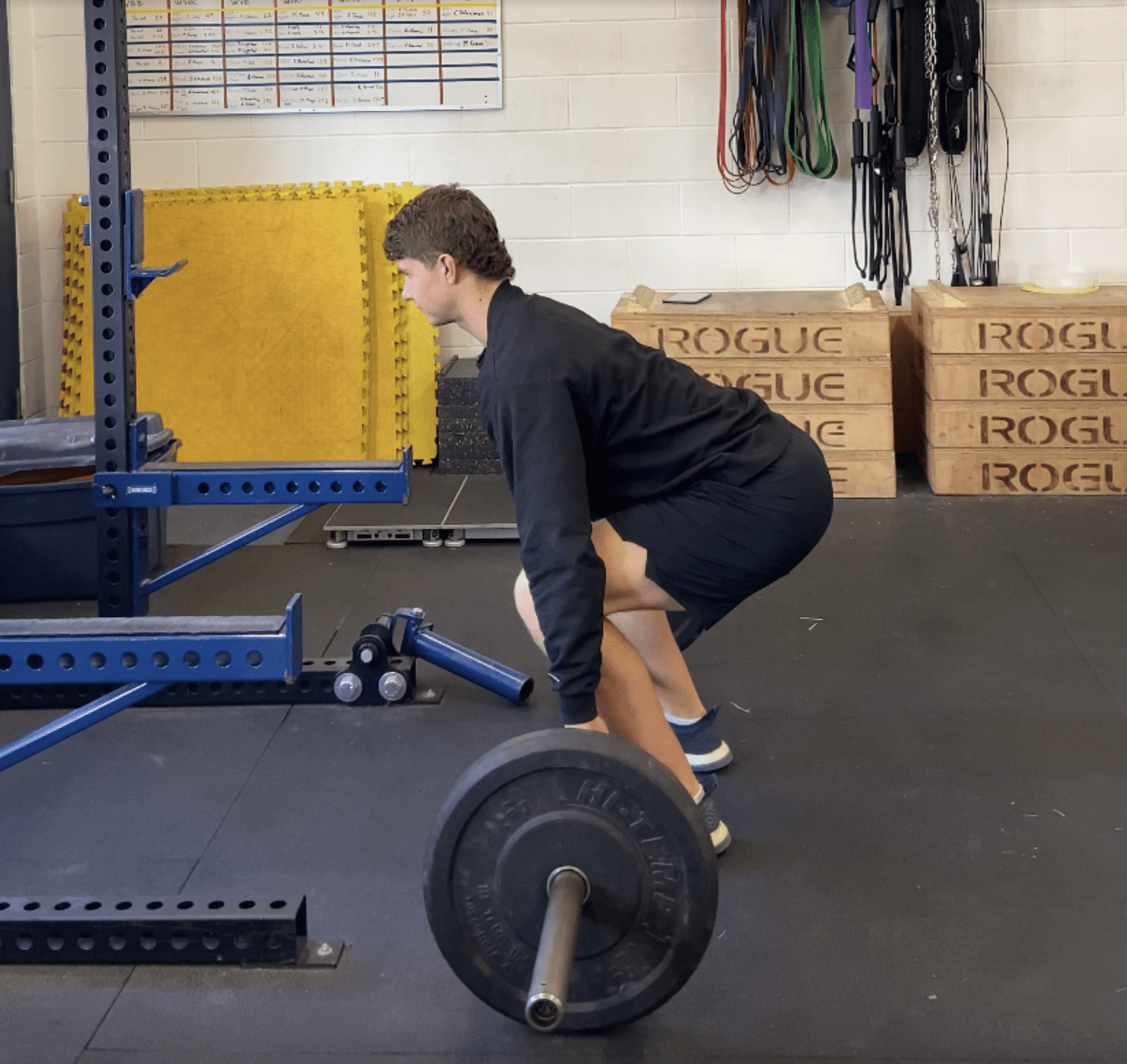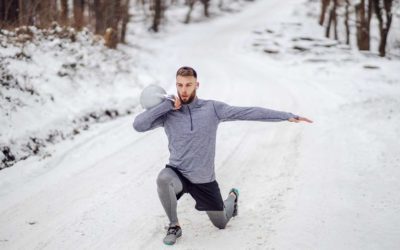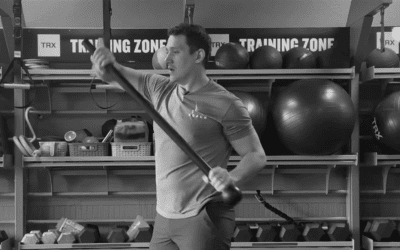Why Sport-Specific Athletes Should Train RDLs

If your sport requires any running, jumping, skating, rotation, or throwing, listen up. Your posterior chain strength is important and it pays to know the movements in the gym that can net you the most gains. If you’re not using Romanian deadlifts to your advantage, it’s time to make sure they’re a staple in your programming.
Cole Hergott is the head S&C coach at Trinity Western University in Langley, BC. With a master’s in coaching science and his CSCS, he’s got the passion for fitness, nutrition, and sports. In this blog, he outlines why you need RDLs in your training.

Change the Way You Train
Deadlifts Are Cool — RDLs Are Better.
The deadlift. So much bravado, so much ego. Everyone wants to be the strongest person at pulling stuff off the floor. Just today on my social feed, I saw three videos of athletes deadlifting incredible amounts in big box gyms as they filmed everyone’s astonished reactions. Few things are as impressive as pulling a loaded bar that bends on the way up.
As the head S&C coach at a university, I work exclusively with athletes. Do we deadlift? Yes, all kinds. Are they valuable? Yes, absolutely. However, I want to make the case that the Romanian Deadlift (RDL) is one of the best pulling variations for athletics. And if you’re not doing it, you should be.
In the RDL, the bar doesn’t really need to touch the floor (unless you’re super mobile in your hamstrings), so you maintain tension through the entire movement. Let’s get into why that’s important for athletes.
RDL Benefits & Muscles Worked
Why is the deadlift so effective, and why do people do it on back day when it clearly looks like a leg exercise? If you look at the anatomy of muscles used when deadlifting from the floor, whether traditional, sumo, or using a trap bar, deadlifts work a big chunk of major muscle groups:
- Glutes (butt muscles)
- Hamstrings
- Lower & Upper Back
- Quads (in start of pull off the floor)
- Core
- Grip
One of the key players in the deadlift is your back and spinal muscles. If you’re going to pull something off the floor, you need to have a pretty strong back to keep from bending over and crumpling under all that weight.
So, while your hamstrings & glutes are the main movers in a deadlift, the upper and lower back muscles act as stabilizers so that you can get the weight up for lockout.
The Romanian Deadlift works a similar set of muscle groups — what’s the difference? The main benefit for a Romanian Deadlift compared to one you pull off the floor is not necessarily which muscles they work, but to what extent.
Romanian Deadlifts (RDLs) have a larger emphasis on your glutes and hamstrings than traditional deadlifts as they rely on a larger hinge movement (pushing your butt back) as well as a larger grip component since you don’t set the bar down between each rep.
Why Is The RDL King?
First, let’s take a closer look at the RDL positioning so we’re on the same page. In the bottom position of the RDL, your back is flat and knees only slightly bent with the bar hovering off the ground. Notice how your butt should be WAY back behind you in the hinge. (Try to keep your eyes slightly forward instead of down, though.)

In the conventional deadlift, your butt is still back, but not as much. Your chest is up slightly and your knees can bend more, allowing you to use your quads to push off the floor.

Reason #1: Safety
Working with athletes, the biggest thing for me is safety in the weightroom. Yes, we need to have optimal performance gains and move big weights, but if an athlete gets hurt under my watch, that is a major sin.
In my experience, athletes often hurt themselves deadlifting. That ego of lifting big weights can get in the way and one rep with sub-par form can lead to a few weeks on the sidelines.
RDLs have a lower injury risk due to a few reasons:
- You typically can’t lift as much, less overall stress
- There isn’t as much hype around it, less ego lifting
- Since you start the rep from the top and pull the bar off the pins in the squat rack, you don’t need the big “jolt” pull from the bottom that is a big driver of poor form and injuries.
Reason #2: Hamstring, Glutes, & Grip Development
The RDL is one of the leading exercises when it comes to overall hamstring development. For athletes who run, jump, swim, skate, rotate, or throw (which means everyone) that’s a pretty big deal. Your hamstrings help flex your legs and extend your hips, which is the main movement when driving dynamic power.
Your glutes also get major work done in RDLs, further driving home the hip extension used in developing power. For more on this see: A Guide To Romanian Deadlifts, King Of Glute Exercises
And let’s not forget your grip. I get my athletes to do RDLs without straps. That goes back to the safety of ensuring they don’t overload what their grip and back can handle. It also develops monster grip, which can be a limiter for many athletes. Even if you don’t play a grip-heavy sport (throwing, hockey, etc), having better grip allows you to train other important areas in the gym, like rowing and chin-ups.
A common argument against RDLs compared to conventional deadlifts is that they don’t require as much quad work. So what? We already squat, lunge, leg press, sprint, and do step-ups for our quad development. Not to mention the sport you are training for is likely quad-dominant. Being able to train your hamstrings and butt while giving your quads a break is a major win.
Reason #3: Tendon Health & Transfer to Sport
I love RDLs because they don’t require you to touch the bar to the ground. When performing RDLs, you use your core and posterior chain muscles to brace, stop the bar from going further down, and then bring it back up (which takes a ton of tension and strength).
In other deadlift variations you start from the bottom, create tension, bring the bar up, and then let it come down or just drop it.
Now let’s look at sports. When you sprint, jump, or change direction you need to create tension, stop your body from moving, then propel it again. The movement pattern of the RDL trains your muscles and tendons to be stiffer in sporting actions.
Bonus: the single-leg RDL is an even greater example of transfer to sport, using unilateral work to satisfy all you single-leg heroes out there.
Deadlifts are a great exercise with tremendous benefits. In fact, check out TrainHeroic’s other articles about their long list of benefits: Why the Deadlift is King of All Lifts, as well as why other variations are so great: Deficit Deadlift Benefits & Points of Performance, The Sumo Deadlift: How & Why You Should Be Doing Them.
But the Romanian Deadlift should be one of your first go-to’s for athletes trying to gain strength with a transfer to their sport. Start adding them into your workouts just once a week and you’ll notice some new-found power.
Find Your Perfect Training Plan
Sometimes all you need to reach your destination on your fitness journey is an expert guide. We've got you covered. Browse from thousands of programs for any goal and every type of athlete.
Try any programming subscription free for 7 days!
Want Training Tips, Exercise Guides & Knowledge Bombs Sent to Your Inbox?
Sign up for the FitNerd newsletter from TrainHeroic
Related articles
3 Ways to Improve Mobility Without Stretching
Are you still trying the endless foam rolling and stretching exercises to get that deep squat position? We know how important mobility is for great, or even GOOD performance. All professional athletes have some comfortability in end ranges of motion. So, what else do...
The Ultimate Guide to Lunges: Queen of all Glute Exercises
Your glutes are the largest muscle group in your body. They’re responsible for almost everything your legs do—walking, running, jumping, squatting, lunging, and just standing upright. As far as moving through space goes, strong glutes are the bedrock of overall...
A Beginner’s Guide to Steel Mace Training
Author: Jesse Grund
Mace training will make you a better mover without it’s not confining you to a fixed space or predetermined range of motion. Second, it’s an offset load with 80 to 90 percent of the weight in the head. You’re also constantly having to resist rotation, which creates greater core engagement.

Join the community
Sign up for the latest training news and updates from TrainHeroic

About TrainHeroic
Support
Made with love, sweat, protein isolate and hard work in Denver, CO
© 2022 TrainHeroic, Inc. All rights reserved.






